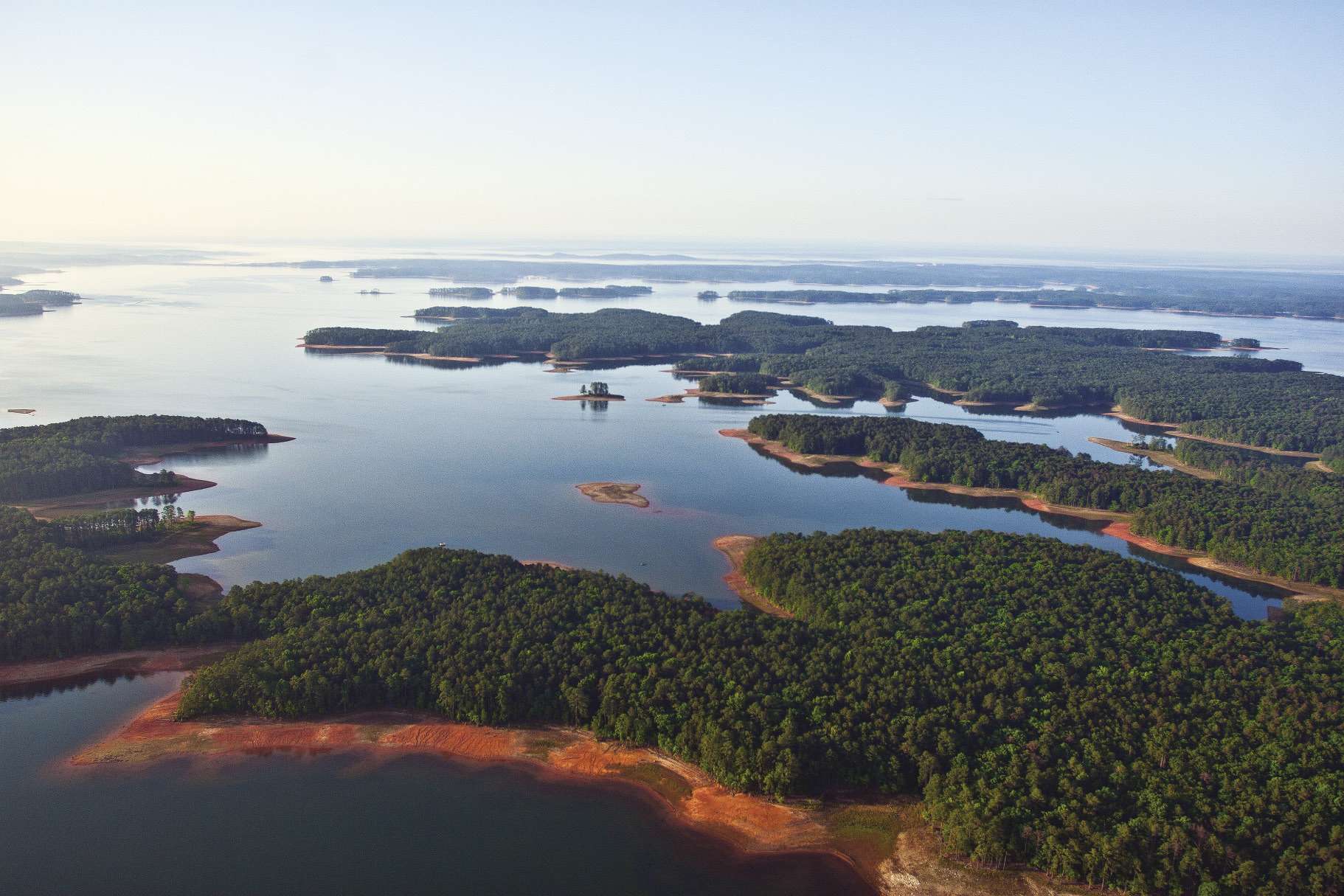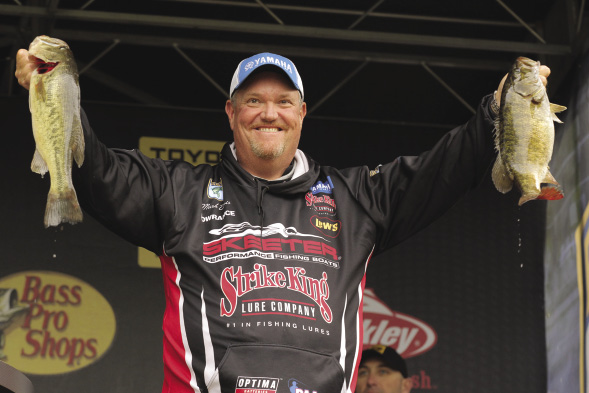
Mt. Ida’s Mark Davis began guiding at Lake Ouachita while attending high school in nearby Hot Springs. Upon graduation, he moved to this pristine 40,000-acre lake and has resided there ever since. Named one of the cleanest lakes in America, Ouachita has a natural, undeveloped shoreline that spans 975 miles.
“I quit guiding when I won the Bassmaster Classic in 1995,” Davis says. “I still fish Ouachita between tournaments to stay sharp.”
SPRING
Davis favors Big and Little Blakely creeks on the lower end of Ouachita in springtime. The water is clearer there and submerged vegetation, mainly hydrilla, is more prominent and grows to depths of 15 to 20 feet.
“When the water temperature is in the low 50s, I look for the healthiest, greenest grass I can find along the northern shorelines,” Davis says.
Davis crushes the bass by twitching a Strike King KVD Slash Bait jerkbait over the grass. Clipping the top of the grass with a 3/4-ounce lipless rattling crankbait in a red crawfish pattern is another deadly tactic.
As Ouachita warms, the bass rise in the water column to soak in the sun. Davis picks them off with a 7-inch straight-tail worm rigged wacky style on a 2/0 straight-shank worm hook. A 6-foot, 10-inch Lew’s medium action spinning rod and 8-pound Seaguar AbrazX fluorocarbon line allow Davis to cast the light worm with precision.
“Sunning bass are spooky,” Davis says. “You have to make long, accurate casts to cover.”
The cover is typically grass, windfalls and timber, which could be standing in water as deep as 25 feet. Davis lets the wacky worm sink next to the cover for five to eight seconds on a slack line. Then he tightens the line to see if a bass has inhaled the worm. If not, he shakes the worm and lets it sink a few more feet before reeling it in.
“That wacky worm catches bass for me right through the spawn and when bass are guarding their fry,” Davis adds.
SUMMER
The topwater bite is hot at Ouachita from late May until about the third week in June, Davis points out. He concentrates on the midlake area north and south of Buckville. The bass suspend over points that are 20 to 30 feet long and drop sharply into depths of 100 feet or more.
“That’s when I go to work with a big dog-walking stickbait,” Davis says.
When the topwater bite dies, Davis grabs his flippin’ stick and arms it with 50-pound braided line. He knots the line to a plum 10-inch worm with a 3/4-ounce tungsten bullet weight or a 1 1/8-ounce green pumpkin jig dressed with a Strike King Rodent.
“I pitch those baits into the outside edges of the hydrilla,” Davis says. “If the bait hits bottom without a bite, I shake it a few times and reel in.”
FALL
 “My favorite time to fish Ouachita is in the fall,” Davis says. “That’s when I run to the upper end of the lake and crank creek channel ledges. That pattern begins in September and can continue into December.”
“My favorite time to fish Ouachita is in the fall,” Davis says. “That’s when I run to the upper end of the lake and crank creek channel ledges. That pattern begins in September and can continue into December.”
Strike King’s 5XD crankbait, which digs bottom in 13 feet or more, is Davis’ workhorse. Shad colors are mainstays, but chartreuse with a blue back gets the call in stained water.
“I hold my boat in at least 20 feet of water and crank ledges 8 to 15 feet deep,” Davis says. “Key places are high spots on the side of a creek bank, ledges with stumps and where ditches intersect.”
Davis grinds the bottom with a brisk retrieve. When he finds a school of bass, he stays put.
“That’s when you can catch 20 to 50 bass without moving the boat,” Davis claims.
WINTER
Davis catches big numbers of bass and the bruisers in wintertime at Ouachita, especially on the middle and lower sections of the lake. He slams the fatties in 25 to 35 feet of water with a 3/4-ounce green pumpkin football jig dressed with a green pumpkin craw. Key spots are deep grass points, bluff banks, bluff ends and the ends of long points that drop into deep water.
A 3/4-ounce jigging spoon on 20-pound fluorocarbon line also does some of the heavy lifting for Davis. He idles into creeks on the lower end of Ouachita that have standing timber and fishes his way out.
“I follow the creek channel and pop that spoon vertically off the bottom 30 to 45 feet deep,” Davis says. “It’s challenging because the creeks are narrow and serpentine.”
The bass typically hang near a big tree on the lip of a ditch or the outside bend of a creek. When you catch one bass, stay put, because they school tightly in the winter. You should be able to catch dozens more from the same spot.
Lake Ouachita helped Mark Davis become a legend of bass fishing. It’s still his favorite lake
to fish.
Visit Bassmaster.com/Arkansas for more on Arkansas bass fishing.





